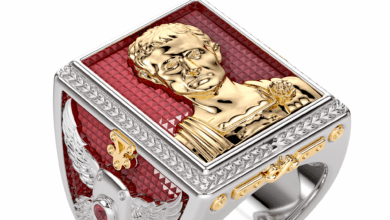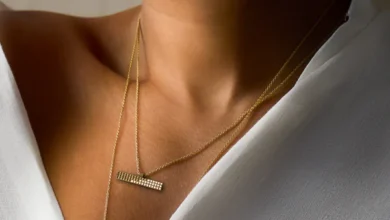
Register to get 1 free article
Reveal the article below by registering for our email newsletter.
Want unlimited access? View Plans
Already have an account? Sign in
Millennials have been called a generation of industry-killers. The buying trends of this iconoclastic age group have severely dented several industries, including beer, napkins and mayonnaise. The spending power (or, more importantly, non-spending power) of millennials shouldn’t be underestimated. Forbes declared them the generation with the highest buying potential. So, as more industries take steps to understand the mind of the millennial consumer, it’s natural to wonder: is jewellery fated to go the same way as beer, napkins and mayo?
The millennial consumer psyche
Considering the huge buying power of millennials, it’s natural to ask the question: what do millennials actually want? A report from Deloitte shows that 84% of millennials believe it is their duty to change the world. This suggests that millennials are increasingly conscious of the imperfect, even broken, world around them. Environmentalism, climate change and human rights violations have been some of the hot topics pervading millennial discourse as of late. It’s likely that these discussions affect the way millennials choose their careers and spend their money.
Studies show that 72% of millennials are more likely to spend money on experiences than material goods. We can see in this generation a clear shift away from materialism. Of course, millennials are still buying. But a growing trend towards sustainability and environmentalism means that they are buying very differently. If millennials want to change the world, then they’re considering how they can do that with their purchases. More and more often, they’re buying products with low environmental impacts and transparent supply chains. We can see this through the sustainable fashion movement and the slow food movement. Unlike any generation before, millennials are starting to view their purchases through a lens of morality.
Do millennials buy jewellery?
If shopping is now happening under a lens of morality, then the jewellery industry is undoubtedly facing scrutiny from millennial consumers. It’s no secret that the mining industry has a murky history of human rights violations. This generation’s unofficial environmentalist superhero, actor Leo DiCaprio, made waves with his 2006 film, “Blood Diamond.” After its release, diamonds went from “girl’s best friend” to symbols of murderous oppression seemingly overnight. Then, at a moment when the global perception of luxury jewellery was facing scrutiny, the millennials emerged into the world saddled with student debt. These two factors combined to mean that expensive jewellery was likely not a priority for many millennial shoppers.
So, did millennials stop buying jewellery altogether? Jewellery, at its core, is a luxury not a necessity, and would not necessarily survive the shift away from materialism. But the industry has proved itself more resilient than beer and mayonnaise. A recent survey found that 51% of millennial women buy jewellery for themselves. And, as De Beers famously opined in 1948, it does seem that “a diamond is forever.” Millennial shoppers are still favouring diamond engagement rings. This year, they made up 41% of diamond sales despite only being 27% of the population.
So DiCaprio’s flick didn’t stop millennial diamond sales, but it does seem to have changed them. A survey conducted by The Future Laboratory found that 91% of millennial shoppers now thoroughly research jewellery brands before buying. Unlike previous generations that were more susceptible to advertising, millennials want the cold hard facts. Where was the diamond mined? Under what conditions were the miners working? Were they paid fairly? What occurred at each stage of the supply chain? A growing number of millennial shoppers no longer separate retail from morality. They want jewellery that has a positive story behind it.
What is ‘sustainable’ jewellery?
But what does a “positive story” really mean? “Sustainable jewellery,” much like “sustainable fashion,” has become a bit of a buzzword. That means a comprehensive definition of the term can be hard to pin down. In essence, a “sustainable” piece of jewellery needs to be ethically produced and environmentally sustainable. When we talk about ethical production, we’re talking about safe working conditions and fair wages for the workers. We’re looking for mining organisations that empower local communities rather than exploit them.
The other factor is the environmental sustainability. The mining process itself is hugely harmful to earth. It results in erosion, soil contamination and biodiversity loss. Dangerous chemicals like cyanide are then used to separate gold from ore. A study at the George Washington University School of Business found that that mining a single ounce of gold can result in 20 tons of waste. More and more research is coming to light about the harmful effects of mining and the industry’s human rights violations. As it does, it’s natural that more and more millennials will search for sustainable alternatives to traditionally mined jewellery.
The future of the jewellery industry
Slowly, the jewellery industry has started exploring sustainable options in response to millennial trends. More jewellers are choosing to partner with organisations such as Fairmined. The Fairmined certification ensures that miners are fairly paid for their work. It allows them to fully reap the benefits of selling their gold on a global stage. Last year, IBM was lauded for their introduction of TrustChain, the latest in blockchain technology. TrustChain allows consumers to trace a piece of jewellery through its entire supply chain, ensuring transparency and ethical production. Finally, although there’s still some consternation over lab-grown diamonds, surveys show that 21% of millennials are more likely to purchase a lab-grown diamond than a traditional one.
As Gen Z follows in the steps of the millennials, it’s likely that these initiatives will become more than trends. In fact, it’s easy to imagine them becoming industry norms. Millennials are a generation that are starting to hold more brands accountable. It seems that they’re far less swayed by flashy advertising than previous generations. In surveys conducted by Medium, less than 1% of millennials said an advertisement would make them trust a brand. Instead, more and more millennials want transparency. More and more want sustainability. And, more and more are willing to pay for it. 73% of millennials surveyed said they would pay a premium for a sustainable option. The time is now for the industry to respond to that demand.
By Isabelle Bousquette, research and content specialist at MAMOQ, an online marketplace for ethical and sustainable fashion that’s on a mission to create a greener more conscious fashion industry







